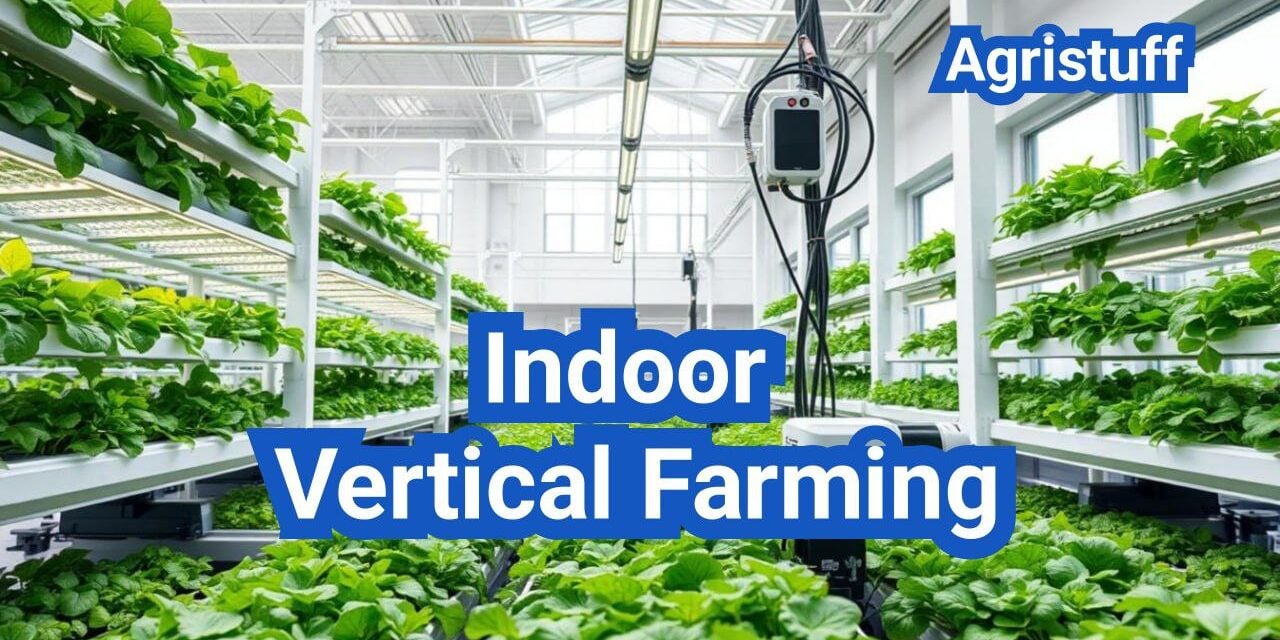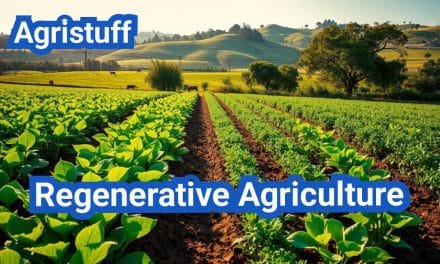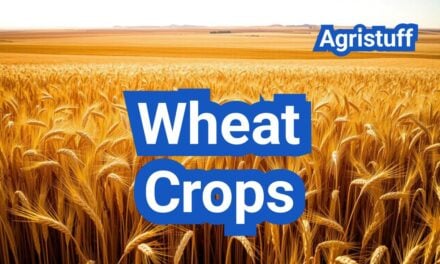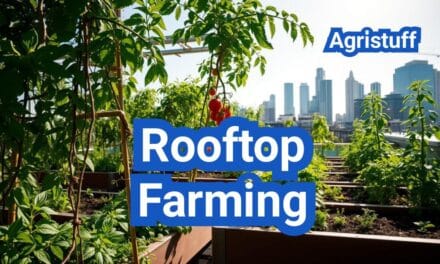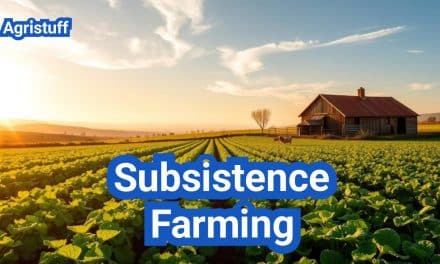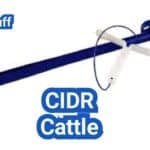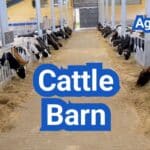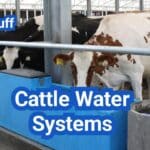Innovative agriculture is transforming the way we produce food. Indoor vertical farming is at the forefront of this revolution, offering a high-tech solution to grow crops year-round near urban centers.
This method uses less land and water than traditional farming, making it an attractive option for sustainable food production. As the global population continues to urbanize, the demand for fresh, locally grown produce is on the rise.
The focus of this article is to explore the business models, markets, and unit economics of indoor vertical farming, providing insights into its potential for growth and profitability.
Key Takeaways
- Indoor vertical farming is a sustainable method of food production.
- It offers a high-tech solution for growing crops near urban centers.
- The industry is expected to grow due to increasing demand for local produce.
- Business models and unit economics are crucial for the industry’s profitability.
- Markets for indoor vertical farming are expanding globally.
The Evolution of Indoor Vertical Farming
Indoor vertical farming has evolved substantially, driven by technological innovations and sustainability needs. This evolution marks a significant shift from traditional agriculture to more advanced, vertically integrated farming solutions.
From Traditional Agriculture to Vertical Solutions
Traditional agriculture faces numerous challenges, including land degradation, water scarcity, and the environmental impact of chemical pesticides and fertilizers. Indoor vertical farming addresses these issues by bringing crop production indoors, where conditions can be controlled and optimized. This method allows for year-round production, regardless of external weather conditions or seasons.
Key Technological Advancements
Several technological advancements have been pivotal in the development of indoor vertical farming. These include:
- LED Lighting: Energy-efficient and customizable, LEDs provide the specific spectrum and intensity required for different crops.
- Hydroponics and Aeroponics: Soilless cultivation methods that deliver nutrients directly to the roots, enhancing growth rates and reducing water usage.
- Automation and Robotics: Streamlining labor-intensive tasks, automation improves efficiency and reduces operational costs.
Current State of the Industry
Today, indoor vertical farming is gaining traction worldwide, with various businesses adopting this innovative approach. According to industry reports, the global vertical farming market is expected to grow significantly in the coming years. A snapshot of the current state can be seen in the following table:
| Region | Market Size | Growth Rate |
|---|---|---|
| North America | $1.2 billion | 20% |
| Europe | $800 million | 18% |
| Asia-Pacific | $1.5 billion | 22% |
As the industry continues to evolve, we can expect to see further innovations and improvements in indoor vertical farming practices.
Understanding Indoor Vertical Farming Systems

The backbone of indoor vertical farming lies in its diverse range of growing systems, each designed to optimize crop production and efficiency. These systems are crucial for the success of indoor farming operations, as they directly impact yield, resource utilization, and overall profitability.
Hydroponics Systems
Hydroponics involves growing plants in a nutrient-rich water solution rather than soil. This method allows for precise control over nutrient delivery, water usage, and root zone conditions. Hydroponic systems are highly efficient, using significantly less water than traditional farming methods. They are particularly well-suited for leafy greens and other crops that thrive in water-based environments.
Aeroponics Systems
Aeroponics takes the concept of soilless cultivation a step further by suspending plant roots in the air and delivering nutrients through a fine mist. This innovative approach can lead to faster growth rates and higher yields due to the increased oxygenation of roots. Aeroponics is highly water-efficient and can be used for a variety of crops.
Aquaponics Systems
Aquaponics integrates hydroponics with aquaculture, creating a symbiotic system where fish and plants coexist. The waste produced by fish provides nutrients to the plants, while the plants help purify the water for the fish. This closed-loop system promotes biodiversity and can be highly productive, offering both fish and crops as marketable products.
Hybrid Approaches
Many indoor vertical farms are adopting hybrid approaches, combining different growing systems to maximize efficiency and crop diversity. By integrating hydroponics, aeroponics, and aquaponics, farmers can optimize growing conditions for a wide range of crops, from leafy greens to fruiting plants and even fish. This flexibility is key to adapting to changing market demands and environmental conditions.
In conclusion, the choice of indoor vertical farming system depends on factors such as crop selection, resource availability, and market requirements. Understanding the strengths and limitations of each system is crucial for designing an effective and sustainable indoor farming operation.
Core Components of Successful Indoor Vertical Farms
Successful indoor vertical farms rely on a combination of advanced technologies to optimize crop growth and reduce operational costs. These farms integrate multiple systems to create an ideal growing environment.
Lighting Technologies
Advanced lighting technologies are crucial in indoor vertical farming. LED grow lights are the most common choice due to their energy efficiency and customizable spectrum. They can be tailored to specific crop needs, enhancing growth rates and yields.
Climate Control Systems
Climate control systems are vital for maintaining optimal temperature, humidity, and air quality. These systems ensure that crops are grown in a stable environment, which is essential for healthy plant development.
Automation and Robotics
Automation and robotics play a significant role in streamlining farm operations. Automated systems can handle tasks such as planting, monitoring, and harvesting, reducing labor costs and increasing efficiency.
Monitoring and Data Analytics
Monitoring and data analytics are essential for optimizing farm performance. By continuously monitoring factors like temperature, light, and CO2 levels, farmers can make data-driven decisions to improve crop yields and reduce waste.
By incorporating these core components, indoor vertical farms can achieve higher productivity and sustainability, making them a viable option for future food production.
Predominant Business Models in Indoor Vertical Farming

Indoor vertical farming companies are experimenting with multiple business models to achieve success. This experimentation is driven by the need to adapt to changing market conditions, consumer preferences, and technological advancements.
B2B Wholesale Model
The B2B wholesale model involves selling produce to retailers, restaurants, and other businesses. This model allows indoor vertical farms to focus on production while leveraging established distribution channels. Key advantages include:
- Predictable revenue streams
- Scalability through large orders
- Reduced marketing efforts
However, it also comes with challenges such as lower profit margins and the need to meet wholesale quality standards.
Direct-to-Consumer Model
The direct-to-consumer model involves selling produce directly to consumers through various channels such as online platforms, farmers’ markets, or on-site retail. This model enables indoor vertical farms to build brand loyalty and command higher prices.
Licensing and Technology Provider Model
Some indoor vertical farming companies adopt a licensing model, where they license their technology to other businesses. This model can provide a steady stream of revenue through royalties.
Hybrid Business Models
Many indoor vertical farming companies are adopting hybrid models that combine elements of the above models. For instance, a company might sell its produce through both B2B wholesale and direct-to-consumer channels. This flexibility allows businesses to adapt to changing market conditions.
By understanding these predominant business models, indoor vertical farming companies can make informed decisions about their own business strategies, ultimately driving growth and profitability in this innovative industry.
Market Analysis: Who Buys Vertical Farm Produce?
Understanding the buyers of vertical farm produce is crucial for businesses in this industry. The market for vertical farm produce is diverse, catering to various sectors that value freshness, sustainability, and local production.
Grocery Retailers
Grocery retailers are significant buyers of vertical farm produce. They seek fresh, high-quality produce to meet consumer demand for healthy and locally grown products. Major grocery chains are increasingly partnering with vertical farms to supply their stores with a consistent and reliable product.
Food Service Industry
The food service industry, including restaurants and cafes, is another key market. Chefs and food service providers value the freshness and customizability of vertical farm produce, using it to create seasonal menus and dishes that appeal to health-conscious consumers.
Direct Consumer Markets
Direct consumer markets are also a vital channel for vertical farm produce. Consumers are increasingly interested in purchasing fresh produce directly from the source, often through community-supported agriculture (CSA) programs or online platforms.
Specialty Markets and Niche Opportunities
Specialty markets and niche opportunities exist for vertical farms to supply produce to specific consumer groups, such as organic or vegan markets. These niche markets offer premium pricing opportunities for vertical farms that can meet the specific requirements of these consumers.
In conclusion, the market for vertical farm produce is multifaceted, with various buyer segments offering different opportunities for vertical farming businesses. Understanding these markets is key to developing effective sales strategies.
Geographic Market Opportunities

As the world shifts towards sustainable food production, geographic market opportunities for indoor vertical farming are expanding. This growth is driven by the increasing demand for fresh produce in urban areas, regions with challenging climates, and international markets looking to enhance food security.
Urban Centers and Food Deserts
Urban centers, particularly those with food deserts, present significant opportunities for indoor vertical farming. By locating farms in or near urban areas, businesses can reduce transportation costs and provide fresh produce to communities that lack access to healthy food options. Urban agriculture initiatives are on the rise, with cities like New York and Chicago leading the way.
Regional Climate Considerations
Regions with extreme or challenging climates also benefit from indoor vertical farming. Areas prone to droughts, floods, or with limited arable land can utilize vertical farming to maintain a consistent food supply. For instance, indoor farms can thrive in arid regions by using advanced hydroponics and aeroponics systems, minimizing water usage.
International Market Potential
The international market potential for indoor vertical farming is vast. Countries with limited agricultural land or those facing food security challenges are turning to vertical farming as a solution. Middle Eastern countries, for example, are investing heavily in indoor agriculture to reduce their reliance on imports and enhance food security.
According to industry experts, “The future of farming is not just about growing crops; it’s about growing opportunities in the most unlikely places.” This sentiment is echoed by the growing investments in indoor vertical farming across the globe, highlighting its potential to transform the way we produce food.
Unit Economics Breakdown for Vertical Farming

The viability of vertical farming as a business model hinges on a thorough analysis of its unit economics. Understanding the financial intricacies involved is crucial for investors, entrepreneurs, and industry stakeholders.
Capital Expenditure Analysis
Initial investments in vertical farming include infrastructure costs such as facility construction, lighting, climate control systems, and hydroponic or aeroponic systems. A significant portion of capital expenditure is allocated to LED lighting and climate control, which are essential for maintaining optimal growing conditions.
Operational Cost Structures
Operational costs in vertical farming encompass energy consumption, labor, nutrient solutions, and maintenance. Energy costs, particularly for lighting, are a major expense. Implementing energy-efficient technologies can significantly reduce operational expenditures.
Revenue Projections and Pricing Strategies
Revenue in vertical farming is generated through the sale of produce to retailers, restaurants, or directly to consumers. Pricing strategies must balance profitability with market competitiveness. Producers can command premium prices for fresh, locally grown produce.
Profitability Metrics and Benchmarks
Key profitability metrics include gross margin, EBITDA, and return on investment (ROI). Benchmarking against industry averages helps assess performance and identify areas for improvement.
| Metric | Description | Benchmark |
|---|---|---|
| Gross Margin | Revenue minus cost of goods sold | 30-40% |
| EBITDA | Earnings before interest, taxes, depreciation, and amortization | 15-25% |
| ROI | Return on investment | 20-30% |
Understanding and optimizing unit economics is essential for the long-term success of vertical farming operations. By analyzing capital expenditures, operational costs, revenue projections, and profitability metrics, businesses can make informed decisions to drive growth and profitability.
How to Develop a Vertical Farm Business Plan
To establish a thriving vertical farm, entrepreneurs must craft a detailed business plan that encompasses market research, technology selection, and financial modeling. This comprehensive plan will serve as a roadmap for the venture, guiding decision-making and ensuring long-term success.
Step 1: Conduct Market Research and Identify Opportunities
The first step in developing a vertical farm business plan is to conduct thorough market research. This involves analyzing consumer demand, identifying target markets, and understanding the competitive landscape. By gathering and analyzing market data, entrepreneurs can identify opportunities for differentiation and develop strategies to capture market share.
Step 2: Select Appropriate Technology and Design Systems
Once market opportunities have been identified, the next step is to select the appropriate technology and design systems for the vertical farm. This includes choosing the right growing systems, climate control technologies, and automation solutions. The selected technology should align with the business model and market requirements, ensuring efficient and cost-effective operations.
Step 3: Create Financial Models and Funding Strategy
Developing robust financial models is crucial for the success of a vertical farm. This involves estimating capital expenditures, operational costs, and revenue projections. By creating detailed financial models, entrepreneurs can identify potential funding requirements and develop a funding strategy that may include venture capital, grants, or loans.
Step 4: Develop Operations and Staffing Plans
The final step is to develop operations and staffing plans that ensure the smooth functioning of the vertical farm. This includes defining operational processes, establishing staffing requirements, and developing training programs. By having a well-planned operations and staffing strategy, vertical farm operators can maintain high productivity and quality standards.
Funding Options for Indoor Vertical Farming Ventures

Various funding options are available for indoor vertical farming ventures, each with its pros and cons. Securing the right funding is crucial for scaling operations and achieving profitability.
Venture Capital and Private Equity
Venture capital and private equity firms have shown significant interest in indoor vertical farming due to its potential for high returns. These investors provide not only funding but also strategic guidance and industry connections.
Government Grants and Subsidies
Government grants and subsidies are another vital funding source. Many governments offer incentives for sustainable agriculture practices, including indoor vertical farming, to promote food security and environmental sustainability.
Strategic Partnerships and Joint Ventures
Strategic partnerships and joint ventures can provide indoor vertical farming ventures with access to new markets, technologies, and expertise. These collaborations can be particularly beneficial for expanding into new geographic regions or developing new products.
Alternative Financing Methods
Alternative financing methods, such as crowdfunding and community-supported agriculture programs, are gaining traction. These approaches not only provide capital but also help build a loyal customer base.
In conclusion, indoor vertical farming ventures have a range of funding options to consider. By understanding the advantages and disadvantages of each, businesses can make informed decisions to support their growth and success.
How to Scale Your Indoor Vertical Farming Operation

Scaling an indoor vertical farming operation is a complex process that requires careful planning and strategic decision-making. To achieve successful growth, businesses must consider multiple factors, including their current infrastructure, market demand, and technological capabilities.
Step 1: Implement Modular Expansion Approaches
One effective way to scale indoor vertical farming operations is through modular expansion. This involves adding new growing units or facilities that are designed to be easily integrated into the existing operation. Modular expansion allows businesses to increase production capacity without significant disruptions to their current operations.
Step 2: Evaluate Geographic Expansion Opportunities
Geographic expansion is another strategy for scaling indoor vertical farming operations. This involves identifying new locations where the business can establish new facilities, potentially closer to key markets or with access to favorable climate conditions. When evaluating geographic expansion opportunities, businesses must consider factors such as local regulations, labor costs, and market demand.
Step 3: Diversify Product Lines Strategically
Diversifying product lines is a crucial aspect of scaling indoor vertical farming operations. By expanding the range of crops grown, businesses can reduce their dependence on a single product and increase their revenue streams. Strategic product diversification involves identifying new crops that are well-suited to indoor vertical farming and that meet growing consumer demand.
Step 4: Upgrade Technology for Efficiency Improvements
Upgrading technology is essential for improving the efficiency of indoor vertical farming operations. This can involve investing in new lighting systems, climate control technologies, or data analytics platforms. By leveraging the latest technologies, businesses can optimize their growing conditions, reduce waste, and increase productivity.
Risk Management in Indoor Vertical Farming

Effective risk management is crucial for the success and sustainability of indoor vertical farming operations. As this innovative agricultural method continues to evolve, understanding and mitigating potential risks becomes increasingly important for stakeholders.
Identifying and Mitigating Technological Risks
Technological risks are inherent in indoor vertical farming due to its reliance on advanced systems and infrastructure. Key technological risks include equipment failures, software glitches, and energy supply disruptions. To mitigate these risks, businesses can implement redundant systems, conduct regular maintenance, and invest in reliable energy backup solutions.
Addressing Market and Competitive Challenges
Indoor vertical farming operations must navigate market and competitive challenges, including fluctuating demand, pricing pressures, and competition from traditional agriculture and other indoor farming operations. To address these challenges, businesses can focus on diversifying their product offerings, developing strong brand identities, and forming strategic partnerships to enhance market presence.
Solving Common Operational Problems
Operational problems, such as crop diseases, pest infestations, and nutrient imbalances, can significantly impact indoor vertical farming productivity. Implementing robust monitoring systems, adopting integrated pest management practices, and maintaining strict hygiene protocols can help mitigate these operational risks.
Navigating Regulatory and Compliance Requirements
Indoor vertical farming businesses must comply with various regulations and standards related to food safety, environmental impact, and labor practices. Staying informed about evolving regulatory landscapes and engaging with regulatory bodies can help businesses navigate these requirements effectively and avoid potential legal and reputational risks.
Case Studies: Successful Indoor Vertical Farming Companies
Successful indoor vertical farming companies are redefining the agricultural landscape through innovative business models and cutting-edge technology. These companies have achieved significant milestones, offering valuable lessons for the industry.
AeroFarms: B2B Focus and Proprietary Technology
AeroFarms has established itself as a leader in the indoor vertical farming sector, focusing on B2B sales and developing proprietary technology to enhance crop yields and reduce operational costs. Their approach includes:
- Utilizing aeroponics for efficient water use
- Implementing AI and machine learning for crop monitoring
- Developing large-scale indoor farming facilities
Plenty: High-Volume Production and Retail Partnerships
Plenty has gained recognition for its high-volume production capabilities and strategic retail partnerships. Key aspects of their strategy include:
- Collaborating with major retailers to distribute fresh produce
- Investing in advanced LED lighting technology
- Focusing on scalability and consistency in quality
Bowery Farming: Consumer Brand Development
Bowery Farming has successfully developed a consumer brand, leveraging its indoor vertical farming technology to offer fresh, high-quality produce directly to consumers. Their approach involves:
- Creating a recognizable brand identity
- Implementing smart farming techniques
- Engaging in direct-to-consumer sales through various channels
Actionable Lessons from Market Leaders
The success of AeroFarms, Plenty, and Bowery Farming provides several key takeaways for the indoor vertical farming industry, including the importance of innovative technology, strategic partnerships, and effective branding. By studying these case studies, businesses can gain insights into:
- Developing competitive advantages through technology
- Building strong market presence through partnerships and branding
- Adapting business models to meet evolving consumer demands
Emerging Trends and Innovations in Indoor Vertical Farming

The indoor vertical farming industry is on the cusp of a revolution, driven by technological advancements and innovative business models. As the sector continues to evolve, several emerging trends are set to shape its future.
AI and Machine Learning Applications
Artificial intelligence (AI) and machine learning (ML) are being increasingly adopted in indoor vertical farming to optimize crop yields, predict and prevent diseases, and automate various processes. AI-powered systems can analyze vast amounts of data from sensors and cameras, enabling farmers to make data-driven decisions. For instance, AI can help in monitoring plant health, detecting nutrient deficiencies, and adjusting climate conditions accordingly.
Energy Efficiency Breakthroughs
Energy efficiency is a critical factor in the sustainability of indoor vertical farming. Recent breakthroughs in LED lighting technology and the development of more efficient HVAC systems are significantly reducing energy consumption. Moreover, the integration of renewable energy sources, such as solar panels, is becoming more prevalent, further enhancing the sector’s sustainability.
New Crop Varieties Beyond Leafy Greens
While leafy greens remain a staple in indoor vertical farming, the industry is now exploring the cultivation of a wider variety of crops, including strawberries, tomatoes, and cucumbers. This diversification is made possible by advancements in climate control and lighting technologies, allowing for the creation of optimal growing conditions for a broader range of crops.
Integration with Smart City Initiatives
Indoor vertical farming is increasingly being integrated into smart city initiatives, where it can contribute to urban food security and sustainability. By leveraging data analytics and IoT technologies, indoor vertical farms can be optimized to work in harmony with other urban infrastructure, such as energy grids and transportation systems.
As these trends continue to evolve, they are expected to drive significant growth and innovation in the indoor vertical farming sector, making it an exciting space to watch in the coming years.
Sustainability Impact and Measuring Success
Sustainability is at the core of indoor vertical farming, providing a more environmentally friendly alternative to traditional farming methods. This approach not only reduces the environmental footprint but also offers a scalable solution to meet the world’s growing food demands.
Quantifying Water Conservation Benefits
Indoor vertical farming significantly reduces water usage through advanced hydroponic and aeroponic systems. Water conservation is achieved by recirculating water, minimizing evaporation, and optimizing water delivery to the roots.
A typical indoor vertical farm can save up to 90% of water compared to traditional farming methods, making it an attractive solution for water-scarce regions.
Calculating Land Use Efficiency
By utilizing vertical space, indoor farms can produce more crops per square foot than traditional farms. This land use efficiency is crucial for urban areas where arable land is limited.
- Increased crop yield per square foot
- Reduced land requirements for farming
- Potential for integrating farms into urban landscapes
Assessing Carbon Footprint Reduction
Indoor vertical farming can significantly reduce the carbon footprint associated with agriculture by minimizing transportation needs and using renewable energy sources.
| Factor | Traditional Farming | Indoor Vertical Farming |
|---|---|---|
| Transportation Emissions | High | Low |
| Energy Consumption | Variable | Optimized with LED and renewable energy |
Implementing Circular Economy Principles
Indoor vertical farms can adopt circular economy principles by reusing water, recycling nutrients, and minimizing waste. This approach not only reduces environmental impact but also enhances the economic viability of the farm.
By integrating sustainability metrics into their operations, indoor vertical farms can measure their success and identify areas for improvement, ensuring a positive impact on the environment.
The Future of Indoor Vertical Farming
The future of indoor vertical farming is poised for significant growth, driven by technological innovation and increasing demand for sustainable produce. As urban populations continue to rise, the need for efficient, local food production methods becomes more pressing. Indoor vertical farming offers a solution, providing fresh produce to consumers while minimizing environmental impact.
Sustainability is a key driver in the adoption of indoor vertical farming. By utilizing hydroponics, aeroponics, and other soilless cultivation methods, these farms reduce water usage and eliminate the need for arable land. Innovation in lighting technologies, climate control, and automation further enhances the efficiency and productivity of indoor vertical farms.
As the industry continues to evolve, we can expect to see new innovations and applications emerge. Companies like AeroFarms, Plenty, and Bowery Farming are already pushing the boundaries of what is possible in indoor vertical farming. Their success stories serve as a testament to the potential of this industry to transform the way we produce and consume food.
In the years to come, the indoor vertical farming industry is likely to play an increasingly important role in meeting the world’s food needs sustainably. With ongoing advancements in technology and growing investment in the sector, the indoor vertical farming future looks bright.
FAQ
What is indoor vertical farming?
Indoor vertical farming is a method of growing crops in vertically stacked layers, often in an indoor environment, using techniques such as hydroponics, aeroponics, and aquaponics to optimize crop growth and reduce environmental impact.
What are the benefits of indoor vertical farming?
Indoor vertical farming offers several benefits, including increased crop yields, reduced water consumption, and lower land use requirements, as well as the ability to grow crops in urban areas and reduce transportation costs.
What types of crops can be grown using indoor vertical farming?
A variety of crops can be grown using indoor vertical farming, including leafy greens, herbs, strawberries, and other fruits and vegetables, as well as flowers and other ornamental plants.
How does LED lighting impact indoor vertical farming?
LED lighting is a crucial component of indoor vertical farming, providing the necessary spectrum and intensity for optimal crop growth, and can be tailored to specific crop requirements to improve yields and reduce energy consumption.
What business models are commonly used in indoor vertical farming?
Common business models in indoor vertical farming include the B2B wholesale model, direct-to-consumer model, licensing and technology provider model, and hybrid models, each with their own advantages and disadvantages.
How do indoor vertical farms manage climate control?
Indoor vertical farms use climate control systems to regulate temperature, humidity, and air circulation, creating an optimal growing environment for crops and minimizing the risk of pests and diseases.
What role does automation play in indoor vertical farming?
Automation plays a key role in indoor vertical farming, enabling the efficient monitoring and control of growing conditions, crop health, and harvesting, and reducing labor costs.
How do indoor vertical farms address sustainability and environmental impact?
Indoor vertical farms address sustainability and environmental impact by reducing water consumption, minimizing land use, and implementing circular economy principles, among other strategies.
What funding options are available for indoor vertical farming ventures?
Funding options for indoor vertical farming ventures include venture capital, private equity, government grants and subsidies, strategic partnerships, and alternative financing methods.
How can indoor vertical farming operations be scaled up?
Indoor vertical farming operations can be scaled up by implementing modular expansion approaches, evaluating new geographic locations, diversifying product lines, and upgrading technology for efficiency improvements.
What are the key challenges facing indoor vertical farming?
Key challenges facing indoor vertical farming include managing technological risks, addressing market and competitive challenges, solving operational problems, and navigating regulatory requirements.
What is the future outlook for indoor vertical farming?
The future outlook for indoor vertical farming is promising, with emerging trends and innovations, such as AI and machine learning, energy efficiency breakthroughs, and integration with smart city initiatives, expected to drive growth and adoption.
Conclusion of: Indoor Vertical Farming
Indoor vertical farming at a glance
Indoor vertical farming stacks crops in controlled, enclosed spaces to grow food year-round near consumers, using hydroponics or aeroponics, LED lighting, and tightly managed climate instead of sunlight and soil. In the U.S., indoor vertical farming fits within Controlled Environment Agriculture (CEA), where sensors, automation, and data make production repeatable at scale and compliant with food-safety standards—key factors for winning retail and foodservice accounts. USDA ERS: CEA trends & outlook
Why indoor vertical farming is rising now
Indoor vertical farming is gaining because buyers want consistent, pesticide-free produce, cities want shorter supply chains, and retailers want reliable year-round volume even when weather or logistics fail. The macro backdrop is clear: U.S. produce supply and demand are increasingly dynamic, and localized production from indoor vertical farming can fill premium niches where freshness, shelf life, and traceability command price. USDA ERS: Vegetables & Pulses overview
How indoor vertical farming works (systems snapshot)
At the core, indoor vertical farming integrates multi-tier racks, high-efficacy LEDs, recirculating nutrient delivery, filtration and disinfection, food-grade surfaces, and HVACD (heating, ventilation, air-conditioning, dehumidification). Software ties it together—controlling fertigation, logging batches for traceability, and surfacing KPIs like kWh/kg and labor minutes/kg so managers can tune set-points for yield, quality, and unit economics. Cornell CEA: What CEA is
Lighting science for indoor vertical farming
Light is the engine of indoor vertical farming. Operators plan target DLI (daily light integral) and PPFD (photosynthetic photon flux density) by crop stage, then choose LED spectra that balance efficacy with quality traits. Beyond “red-blue,” research shows adding green improves canopy penetration and human handling without sacrificing growth, making modern broad-spectrum arrays attractive for yield and labor. NASA: Green-light effects on lettuce
Climate control & VPD in indoor vertical farming
Climate is a profit lever in indoor vertical farming. Hitting the right vapor-pressure deficit (VPD) keeps stomata open, pushes nutrient flow, and limits disease pressure. Dehumidification, air mixing, CO₂ control, and temperature zoning are engineered to the crop—and to the heat and moisture load created by the lights and leaves. University of Arizona: VPD fundamentals
What crops fit indoor vertical farming today
While experimentation continues, the sweet spot for indoor vertical farming is fast-turn leafy greens, herbs, microgreens, and transplant seedlings that monetize speed, uniformity, and food-safety assurances. Berries and specialty crops are emerging, but they demand tighter climate windows and capital discipline to pencil. Cornell CEA: Crops suitable for CEA
Market demand & revenue pools for indoor vertical farming
In the U.S., leafy greens are a large, premium-tolerant category, and indoor vertical farming positions well on freshness and consistency. Lettuce alone represents billions in annual cash receipts across romaine, iceberg, and leaf segments; capturing a fraction with branded, local, year-round supply can underpin a facility’s revenue stack. USDA ERS: Lettuce market values
Business model #1: B2B retail & foodservice
The classic indoor vertical farming path is wholesale: sell cases to supermarkets and foodservice distributors on spec, with planogram commitments and QA programs. The value prop is reliable fill rate, uniform leaf geometry, and extended shelf life versus field variability—benefits that earn repeat purchase. Kroger: Vertical-farmed greens in stores
Business model #2: Retailer-aligned & branded supply
Another route is to align indoor vertical farming with a national retailer and co-market “grown nearby” freshness while building regional hubs that match distribution density. This de-risks offtake, improves forecasting, and can support premium SKUs. Walmart + Plenty: Strategic partnership
Business model #3: Tech licensing, micro-farms & co-location
IP owners in indoor vertical farming can license hardware-software stacks, deploy micro-farms in hospitals or campuses, or co-locate at distribution centers to shrink cold chains. Public-utility and policy programs increasingly touch CEA design, so getting the playbook right unlocks incentives and lowers risk. ACEEE/RII: CEA policy guide
CAPEX: where the money goes
Initial spend for indoor vertical farming concentrates in the shell (or retrofit), racks, LEDs, HVACD, water treatment, controls, and postharvest spaces designed for food-grade flow. Early energy and process modeling prevents wrong-sized equipment and supports accurate service-entrance planning with the utility. NREL (2025): CEA technical overview
OPEX drivers and cost control
Operating costs in indoor vertical farming are led by electricity (lighting, dehumidification, fans, pumps), labor, packaging, seeds and substrates, QA and compliance, maintenance, and distribution. Lighting strategy—fixture efficacy, dimming schedules, and photoperiod by growth stage—often makes or breaks margin. U.S. DOE: Horticultural lighting report
Energy intensity & benchmarking
Energy per kilogram varies widely in indoor vertical farming because local climate, DLI targets, and dehumidification choices differ. Benchmarks from research groups show indoor production can exceed greenhouse energy use if poorly engineered—making heat recovery, sensible/latent load balance, and air distribution design critical. MSU Extension: Vertical farm energy use
Water, circularity & nutrient recovery
Recirculating systems let indoor vertical farming minimize withdrawals while maintaining food safety through filtration, UV/ozone, and chemical sanitation regimes. Designing for water circularity from day one reduces waste, protects root health, and eases regulatory conversations. RII: Water best-practices guide
Carbon & location strategy
Because electricity dominates, the carbon profile of indoor vertical farming depends on the regional grid and procurement choices. Selecting favorable eGRID sub-regions, adding demand control, and exploring green tariffs or PPAs can materially cut Scope 2 intensity and strengthen ESG claims. EPA eGRID: Sub-regional emission factors
Food safety & compliance
Indoor vertical farming must comply with the FDA Produce Safety Rule: worker hygiene, water quality, equipment sanitation, recordkeeping, environmental monitoring, and recall readiness. Build SOPs and a CAPA culture early to protect brands and contracts. FDA: FSMA Produce Safety Rule
Organic claims & hydroponics
Hydroponic systems, including indoor vertical farming, can be USDA Organic certified by accredited certifiers, though documentation and input control are strict and policy debates continue. Engage your certifier early on substrates, nutrients, and sanitation chemistry. USDA AMS/NOP: Hydroponics & organic certification
Energy prices, incentives & siting
Location can make or break indoor vertical farming economics. Compare commercial electricity rates, demand charges, and rate riders; then stack utility rebates for LEDs, HVACD, and controls along with state and federal incentives to compress payback and hedge volatility. DSIRE: U.S. clean-energy incentives database
Execution risks: capital discipline & realism
Vertical farms have made headlines for both rapid growth and painful resets. The lesson for indoor vertical farming is to phase capacity, underwrite energy first, and secure contracted demand before scaling. Unit economics—not hype—determine survival. BBC: AeroFarms restructuring coverage
Unit economics: a practical frame
Model indoor vertical farming around dollars per square meter of active canopy per year. Revenue equals price × yield × harvests × pack-out; costs include energy by end use, labor minutes/kg, seeds and substrates, nutrients, packaging, QA/compliance, maintenance, and logistics. Track north-star KPIs—kWh/kg, minutes/kg, water L/kg, shrink%—and compare against anonymized benchmarks to spot outliers. RII: CEA energy & water benchmarking
Sensitivity levers you can pull
On revenue, indoor vertical farming can improve crop mix (herbs vs. greens), raise DLI within quality bounds to speed turns, upgrade SKUs, and negotiate longer-term offtake. On cost, the big levers are LED efficacy (µmol/J), smarter dimming and photoperiod control, efficient dehumidification with heat recovery, airflow design, and preventive maintenance that protects uptime. DOE: Lighting guidance for growers
U.S. markets & positioning
Winning with indoor vertical farming often means selling “local, reliable, traceable” plus measured freshness (hours from harvest) and consistent unit weight. Start with regional grocers and foodservice distributors to earn data on turns and shrink; scale to national accounts with co-branded SKUs after proofs. Retailer example: In-store vertical-farmed greens
Technology, workforce & SOPs
Indoor vertical farming teams blend plant physiologists, industrial engineers, HVAC/controls specialists, and QA leads. Standardized work, training, and sensors at critical control points keep variability low and food-safety documentation complete for audits and customers. ACEEE/RII: Workforce & efficiency considerations
Launch checklist for first-time builders
For new indoor vertical farming projects: 1) Validate demand with letters of intent. 2) Choose a site for power, logistics, and workforce. 3) Engineer HVACD/lighting from target DLI and VPD backward. 4) Build a food-safety plan and traceability stack. 5) Pre-qualify incentives and financing. 6) Commission one room first, lock SOPs, then scale. 7) Audit KPIs monthly and tune set-points. Cornell CEA: Grower resources
The sustainability reality check
Indoor vertical farming can crush water use and pesticide intensity while reducing land pressure, but energy remains the swing variable. The path to credible sustainability claims is high-efficacy equipment, smart climate design, and cleaner electricity—measured and reported with transparent methods. Nature (2025): Indoor agriculture & energy synthesis
Final thought
Treat indoor vertical farming like an energy-aware food factory with contracted demand, not a gadget. When lighting, climate, and logistics are managed as profit levers—and when incentives and retailer partnerships are in place—indoor vertical farming can carve durable, premium niches in U.S. produce. Further reading: USDA ERS on CEA
Sources & References
- Cornell University – About Controlled Environment Agriculture
- Cornell University – Crops in CEA
- University of Arizona – Vapor Pressure Deficit (VPD) guide
- USDA ERS – Lettuce market values
- ACEEE & Resource Innovation Institute – CEA Policy Guide
- NREL (2025) – Controlled Environment Agriculture overview
- Resource Innovation Institute – Water Circularity Best Practices
- EPA – eGRID sub-regional emission factors
- FDA – FSMA Produce Safety Rule
- USDA AMS/NOP – Hydroponics & Organic Certification (context)
- DSIRE – U.S. Energy Incentives Database
- Resource Innovation Institute – Energy & Water Benchmarking (CEA)
- Nature (2025) – Indoor agriculture & energy synthesis

